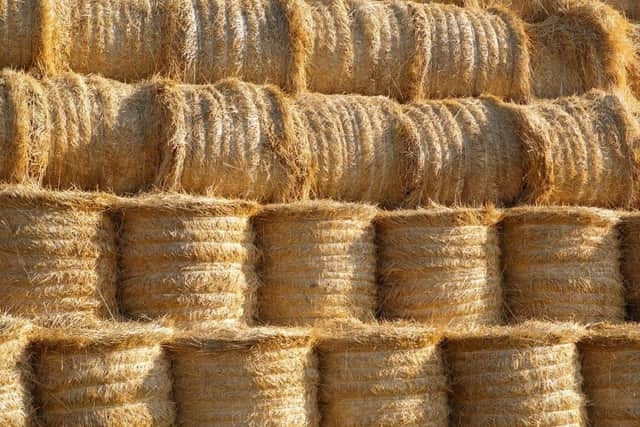Hay bales are being cited as major fire and death risk on region's farms
Winter is said to be a particularly dangerous time as bad weather and dark nights and mornings mean more work is being done inside barns.
According to the Health and Safety Executive’s data and research into ‘Fatal injuries in agriculture, forestry and fishing in Great Britain 2022’, 20 per cent of all agricultural deaths in 2021/22 were due to people being struck by an object, with hay bales being a leading cause.
Advertisement
Hide AdAdvertisement
Hide AdThere have been several deaths, serious injuries and life-changing injuries across Yorkshire farms over recent years where farmers and farm workers have had accidents with hay and straw bales.


A total of 532 fires were recorded at agricultural premises in England between 2021/22, 429 of them were accidental, and 103 were caused deliberately, the Government’s fire data also revealed.
In addition should an incident occur, there are also warnings over having the proper insurances in place and meeting the requirements for them.
Harry Appleton-Metcalfe, of northern based rural insurance broker Lycetts which has a branch at Catterick Garrison, said: “In addition to the risks of fatal accidents, failure to observe the stipulated stack and distance limits for haystacks could invalidate insurance cover.
Advertisement
Hide AdAdvertisement
Hide Ad“If stack limits are contravened, such as being too close together, too high or undervalued, farmers face significant shortfalls in the event of loss, such as accidental fire or arson.
“It is imperative that farmers find out if there is a haystack limit defined by value rather than volume. If, for example, a stack with £60,000 worth of hay catches fire, there is a strong chance it exceeds the limit. Often there are distance limits written into policies too, which is usually 20 metres, but this can vary.
“The best way to comply with the terms of a policy is to split stacks and keep them in different locations, but checking the policy wording should be the first port of call.
“The stakes are too high and are certainly not worth the gamble.”
Advertisement
Hide AdAdvertisement
Hide AdAn abundance of combustible materials, threat of arson, risk of electrical faults in buildings and overheating in machinery are just some of the fire risks farmers face daily.
To mitigate the risk of spontaneous fires, Mr Appleton-Metcalfe recommends simple measures, such as ensuring there are no naked bulbs or misplaced glass or mirrors near to haystacks, the installation of sufficient and accessible on-site fire extinguishers and having water bowsers nearby.
He added: “It can be expensive to replace produce needed to feed livestock
through the winter so ensure appropriate insurance is in place for this eventuality.
Advertisement
Hide AdAdvertisement
Hide Ad“We’ve encountered incidents of straw being stored in sheds that have been set alight and both the straw and shed have been underinsured.
"Risk management is an often overlooked aspect of farming but taking the necessary precautions can help prevent accidents and financial losses.”
